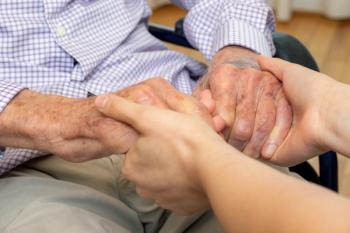
Report on use of telemedicine: 9 takeaways
More people are using telehealth and say they will continue to do so beyond the COVID-19 pandemic, according to Doximity. But there are differences in some groups worth noting.
Telehealth is here to stay in the eyes of many healthcare leaders, and a new report offers more evidence for that view.
Doximity, a digital healthcare company that offers a telehealth platform, released its second “
Here are the 9 key takeaways from the report.
1. Most will use telemedicine beyond the pandemic
Even when the COVID-19 pandemic recedes, most said they will continue to use telehealth. And that number has grown over the past year.
About 3 in 4 patients (73%) said they plan to use telemedicine after the pandemic, up from 58% in 2020. The study found 80% of patients with chronic illness would use telehealth beyond the pandemic, compared to 60% in 2020. Two out of three patients (67%) without chronic illness said they would continue to use telemedicine beyond the pandemic, compared to 55% in 2020.
2. Telehealth use is consistent among racial groups
Patients in all racial groups plan to continue using telemedicine services beyond the pandemic. The survey found 74% of white participants and 74% of Black respondents would continue using telemedicine, along with 77% of Asian participants and 73% of Latino respondents.
While telehealth usage has expanded, a federal study showed there are
3. Most have had a telehealth visit in the past year
There was a substantial increase in the number of participants who said they’ve had at least one telehealth visit in the past year. The survey found 2 out of 3 participants (67%) said they use telehealth at least once annually in 2021, compared to 42% in 2020.
4. Differences in views on quality
The report found a majority (55%) said virtual visits offer comparable or superior care than in-person visits, up from 40% in 2020. But that’s not exactly an overwhelming number, and there are noteworthy differences.
Two out of three participants with chronic illness (67%) said telemedicine visits offered equal or better care than in-person visits. However, less than half (47%) of those without chronic illness said virtual visits were comparable or better than in-person appointments.
5. Most prefer mobile devices
The report also gauged participants on their preferred devices for telehealth visits and smartphones emerged as the clear winner. Most of those surveyed (59%) said they preferred using their mobile devices, while 38% said they preferred using a computer (either laptop or desktop).
The vast majority of Americans (85%) own smartphones, so telemedicine can close the digital gap in medicine, the report suggests.
6. Patients don’t want to wait
Most patients said they would rather not wait in a virtual waiting room. About 4 out of 5 (79%) said they’d rather get a text or phone call when the doctor is ready to see them.
7. Some specialists embrace telehealth
Doctors who treat patients suffering from chronic illnesses are more likely to offer telehealth services. The top 5 specialties using telehealth: 1. Endocrinology; 2. Gastroenterology; 3. Rheumatology; 4. Urology; 5. Nephrology
8. Doctors say it builds trust
Two out of three doctors (67%) said telehealth was helping to build or maintain trust with patients from marginalized communities. The report suggested telemedicine visits offered more convenience and a greater sense of safety due to reduced risk of exposure to illness.
9. Eastern cities rank at the top
Telehealth is being used across the country, but the report found a few cities in the Northeast had the highest use of telehealth. The top 10 cities: 1. Boston; 2. Baltimore; 3. Charlotte, N.C.; 4. Philadelphia; 5. San Francisco; 6. Birmingham, Ala.; 7. Richmond, Va.; 8. Raleigh, N.C.; 9. Denver; and 10. Portland, Ore.
Earlier this month, U.S. Sens. Catherine Cortez Masto (D-Nev.) and Todd Young (R-Ind.)
More than 300 healthcare organizations signed a
More of our coverage on telemedicine








































